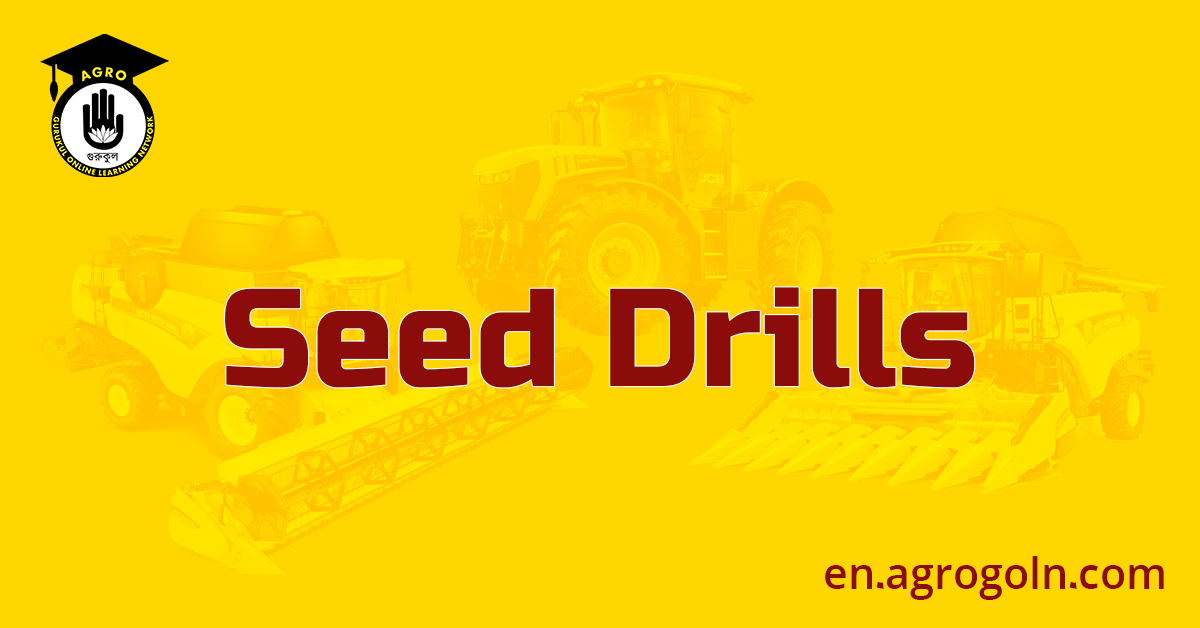In the realm of modern agriculture, efficiency and precision are paramount. As the global population continues to grow, the demand for food production intensifies. To meet these increasing demands, farmers rely on advanced agricultural machinery, and one such innovation that has revolutionized planting and seeding is the seed drill.
Seed Drills

Seed drills are sophisticated pieces of planting equipment that enable farmers to sow seeds directly into the soil at precise depths and intervals. These machines have transformed the way crops are planted, leading to increased productivity, reduced wastage, and improved crop yields. In this article, we will delve into the history, functioning, and benefits of seed drills as part of modern agriculture’s essential planting and seeding equipment.
The Evolution of Seed Drills
The concept of seed drills dates back to ancient civilizations, where rudimentary tools were used for planting seeds. However, it was during the 17th and 18th centuries that significant advancements were made in seed drill technology.
Jethro Tull and the Seed Drill
One of the pioneers in the development of modern seed drills was Jethro Tull, an English agriculturalist, and inventor. In 1701, Tull patented his horse-drawn seed drill, a groundbreaking invention that marked a significant shift in agricultural practices. Tull’s seed drill allowed farmers to sow seeds in rows, at specific depths, and with consistent spacing. This method replaced the traditional broadcasting method, where seeds were scattered manually over the soil’s surface, resulting in uneven distribution and wastage.
Tull’s seed drill consisted of a hopper for holding seeds and a series of tubes or channels that delivered the seeds to the ground at regular intervals. The seeds were then covered with soil, ensuring proper germination and reducing the competition between plants for nutrients and sunlight.
Advancements in the 19th and 20th Centuries
Over the next two centuries, seed drill technology continued to evolve. In the 19th century, various improvements were made to the design and functionality of seed drills. Manufacturers incorporated more precise mechanisms for seed delivery, depth control, and spacing. Additionally, horse-drawn seed drills were gradually replaced by tractor-drawn versions, improving efficiency and allowing for larger-scale farming.
In the 20th century, advancements in engineering and technology led to the development of motorized seed drills, powered by internal combustion engines. These machines further increased planting speed and accuracy, reducing the labor required and increasing overall productivity.
Modern Seed Drills: Features and Functionality
Today, modern seed drills are sophisticated machines equipped with advanced technologies and features. While specific functionalities may vary based on the manufacturer and model, most seed drills share several common components:
- Hopper: The hopper holds the seeds and allows for easy loading and refilling. Some modern seed drills have multiple hoppers, enabling farmers to sow different types of seeds simultaneously.
- Seed Metering Mechanism: This mechanism regulates the flow of seeds from the hopper to the seed tubes, ensuring precise and consistent seed spacing.
- Seed Tubes: Seed tubes deliver the seeds from the hopper to the ground. They are designed to ensure accurate seed placement at the desired depth.
- Depth Control System: A depth control system allows farmers to adjust the planting depth based on the crop’s requirements and soil conditions.
- Row Spacing Adjustment: Some seed drills allow for easy adjustment of row spacing, accommodating different crop types and field conditions.
- GPS and Precision Agriculture Technology: Many modern seed drills are equipped with GPS and precision agriculture technology. This allows for auto-steering and precise field mapping, optimizing planting patterns and reducing overlaps.
Benefits of Seed Drills
The widespread adoption of seed drills has brought about numerous benefits for farmers and agricultural practices:
- Increased Efficiency: Seed drills enable farmers to cover large areas quickly and efficiently, reducing the time and labor required for planting. This increased efficiency is crucial during the narrow planting window, ensuring that crops are sown at the optimal time.
- Uniform Seed Distribution: Seed drills ensure uniform seed distribution and spacing, leading to more even crop growth and reduced competition between plants.
- Conservation of Seeds: Broadcasting seeds manually or with traditional methods often leads to seed wastage. Seed drills significantly reduce seed wastage, leading to cost savings for farmers.
- Improved Crop Yields: Precise seed placement and depth control provided by seed drills result in improved germination rates and better crop establishment, ultimately leading to higher crop yields.
- Sustainable Farming Practices: Precision agriculture technology, often integrated into modern seed drills, promotes sustainable farming practices. By reducing overlap and optimizing planting patterns, farmers can minimize the use of resources such as seeds, fertilizers, and pesticides.
Conclusion
The invention and evolution of seed drills have significantly transformed the landscape of modern agriculture. From the rudimentary implements of the past to the precision machinery of today, seed drills have played a crucial role in increasing productivity, improving crop yields, and promoting sustainable farming practices.
As the global population continues to grow, the importance of efficient and sustainable agriculture cannot be overstated. Seed drills, along with other modern planting and seeding equipment, will continue to be at the forefront of agricultural innovations, empowering farmers to meet the ever-increasing demands for food production in a resource-efficient and environmentally responsible manner.
